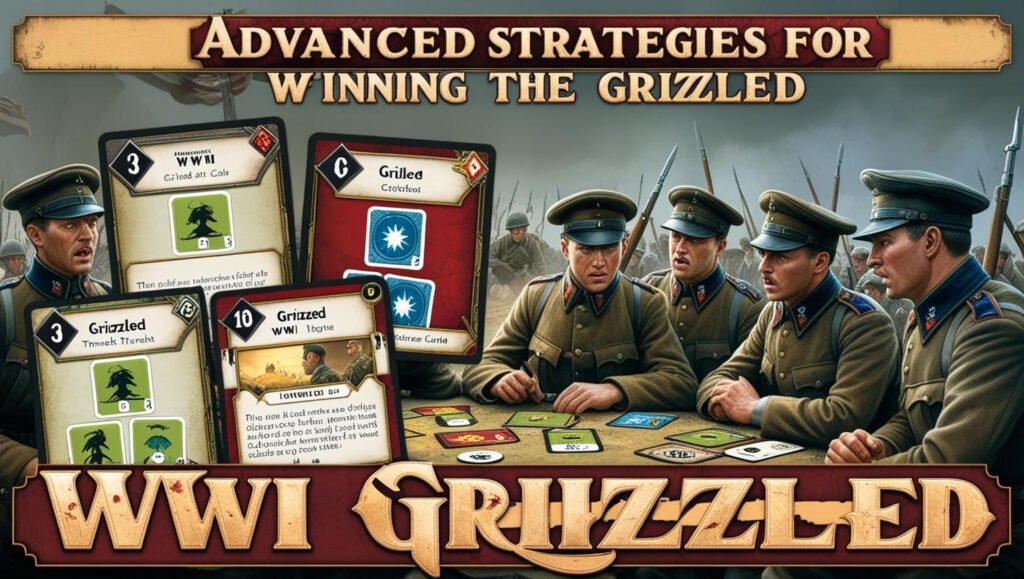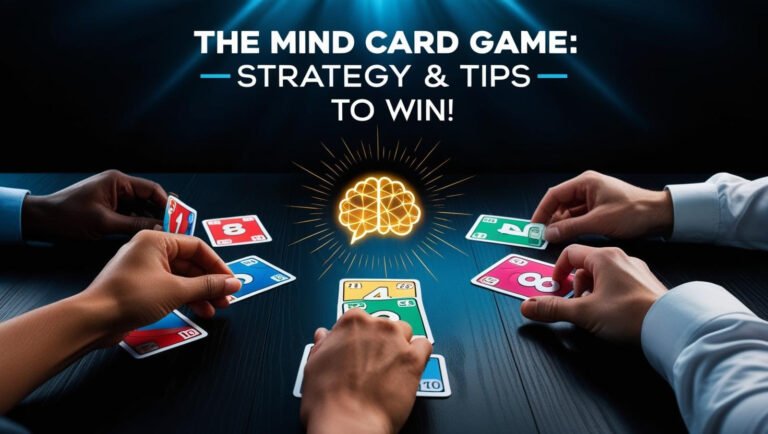Advanced Strategies for Winning The Grizzled

So, you've braved the trenches of “The Grizzled,” survived a few missions, and maybe even tasted victory once or twice. But consistently winning this challenging cooperative game? That requires moving beyond basic teamwork and delving into advanced strategies. It's time to sharpen your tactical skills and explore expert tips to truly master “The Grizzled.”
Mastering the Trenches: Expert Strategies for “The Grizzled”
1. Optimize Team Roles: Finding Your Niche in the Trenches
While “The Grizzled” isn't about rigid player roles, recognizing and leveraging individual strengths within your team can significantly boost your win rate. Think about it – in any group, people naturally gravitate towards certain approaches.
- The Resource Manager: Some players are naturally good at keeping track of everyone's cards and resources, reminding the team about available protection and support. They are the memory banks of the team.
- The Risk Assessor: Others are more cautious, carefully weighing the risks of each action, and pointing out potential dangers lurking in the Peace pile. They are your early warning system.
- The Morale Booster: And then there are those who excel at keeping spirits high, encouraging the team even when things look grim. This is crucial for maintaining focus and preventing discouragement, especially when luck is against you.
In my own game group, I tend to fall into the “Risk Assessor” role. Maybe it's the parental instincts kicking in, but I'm always the one saying, “Are we sure we want to draw another card? Remember that time we were wiped out by three shells in a row?” My friend, on the other hand, is our resident “Morale Booster,” always cracking jokes (dark humor, of course, given the game's theme!) even when we're knee-deep in trouble.
Elevate your gameplay with advanced strategies for winning The Grizzled. Dive into our in-depth Grizzled review for expert insights, compare cooperative tactics in our Grizzled vs Forbidden Island analysis, discover budget-friendly options with the best cheap cooperative board games, and expand your strategic thinking with 10 board games like Sushi Go.
By subtly acknowledging and playing to these tendencies, you can create a more balanced and efficient team. It's not about assigning official roles, but about recognizing natural inclinations and using them to your advantage.
2. Risk Management: Knowing When to Hold ‘Em, Knowing When to Fold ‘Em (or Pass!)
Risk management is paramount in “The Grizzled.” Every decision is a calculated gamble, and understanding when to push your luck and when to play it safe is key.
- Assessing the Peace Pile: As you play more, you start to get a feel for the density of threats and hardships in the Peace pile. Pay attention to how many of each type of card have already been discarded or played. If you've seen a lot of weather cards already, maybe drawing more cards isn't as risky in that area. Conversely, if shells and whistles have been scarce, brace yourselves!
- The Power of the Pass: Don't underestimate the strategic value of passing! Passing isn't just admitting defeat for a turn; it's a tactical maneuver.
- Clearing the Table: Passing helps to clear out accumulated threats and hardships, giving the team a breather and a fresh start for the next round.
- Hand Management: If you're stuck with a hand full of your personal traumas and can't contribute meaningfully, passing is often the best way to avoid dragging the team down.
- Information Gathering: Sometimes, passing strategically allows you to observe what other players are doing and better assess the overall situation before committing your own cards.
We had a game recently where we were facing a brutal combination of weather and threats. Instead of desperately trying to play cards we didn't have, two of us strategically passed in a round. This allowed the third player to discard some crucial support cards and clear the immediate danger, giving us a chance to regroup and eventually pull through. That round of strategic passing was the turning point of the game.
3. Strategic Foresight: Planning Beyond the Next Turn
Thinking one step ahead is good; thinking two or three steps ahead is expert level “Grizzled” play.
- Anticipating Card Combinations: Based on the cards already played and discarded, try to anticipate potential combinations that could emerge. For example, if you see several weather cards in the discard, and Night is still in play, be prepared for a potential onslaught of weather in the next few draws.
- Saving Key Support: Don't just play support cards reactively. Think about future rounds. If you know a particularly nasty threat is still in the Peace pile (like Gas, which can quickly spiral out of control), consider holding onto a Gas Mask even if you don't immediately need it.
- Mission Objective Awareness: Keep the mission objectives in mind. Sometimes, focusing on completing an objective, even if it means taking on a bit more risk in the short term, is the faster path to victory.
Let’s say the mission objective requires removing a certain number of traumas. If you notice several players are accumulating traumas, it might be wise to prioritize cards that discard traumas, even if it means temporarily neglecting other threats. Long-term mission focus is crucial.
4. Adaptability is Key: Reading the Battlefield and Reacting
“The Grizzled” is a dynamic game. The card draws are unpredictable, and the situation on the table can change dramatically from turn to turn. Your strategy needs to be just as adaptable.
- Reacting to Card Reveals: Pay close attention to the cards revealed from the Peace pile each turn. These reveals give you crucial information about what threats are currently active and what might be coming. Adjust your immediate strategy based on these reveals.
- Reading Your Teammates: Subtle communication is key. Pay attention to hints and non-verbal cues from your teammates. If someone sighs heavily when they draw cards, they might be signaling a hand full of trouble! Adjust your support strategy accordingly.
- Changing Course Mid-Game: Don't be afraid to abandon a strategy that isn't working. If you initially planned to focus on removing threats but realize traumas are becoming the bigger problem, pivot your team's focus. Flexibility is your friend.
Example of Adaptive Strategy:
Imagine you start a game aiming to aggressively complete missions early. However, the Peace pile throws a curveball and starts dishing out trauma after trauma. A rigid strategy would see you continue pushing for missions and getting overwhelmed by the accumulating psychological burden. An adaptive strategy recognizes this shift, changes focus to trauma management, and prioritizes support cards that discard traumas before returning to mission objectives.
Elevate your gameplay with advanced strategies for winning The Grizzled. Enhance your tactical approach by mastering gameplay empathy, and build a strong foundation with our guide on how to play a round. Refine your coordination in small groups and balance your moves with insights on luck versus strategy. Finally, sharpen your skills further with our card deck beginner guide.
5. High-Level Plays: Game-Changing Tactics
Here are a few examples of advanced plays that can significantly swing the game in your favor:
- The “Sacrificial Lamb” Pass: One player strategically passes early in a round, even if they could contribute, to force the next player to draw more cards, hoping they might draw a needed support card or trigger a lucky Peace card reveal. This is risky but can be game-changing in desperate situations.
- The “Synchronized Support” Play: Multiple players coordinate to play specific support cards in the same turn to maximize their impact. For example, two players playing “Gas Mask” in the same turn when Gas is on the table ensures complete protection and allows you to focus on other threats.
- The “Calculated Risk” Draw: When the situation is dire, and you desperately need a specific support card, sometimes the best play is to intentionally draw more cards than necessary, increasing the risk of drawing threats, but also increasing your chances of finding that crucial support card. This is a high-risk, high-reward tactic.
- The “Threat Stack Management”: Instead of immediately trying to remove every threat, sometimes it's strategically advantageous to let a specific type of threat accumulate (like weather), especially if you have strong protection against it, while focusing your resources on eliminating more dangerous and harder-to-mitigate threats like gas or shells. This is about prioritizing threats and resource allocation.
Putting it all Together: Experience from the Front Lines
Applying these advanced strategies isn't about following a rigid checklist; it's about developing a deeper understanding of the game's dynamics and making informed, nuanced decisions.
In one particularly memorable game night with friends, we were down to our last nerves. The Peace pile seemed determined to break us. We were facing a mission with only a few cards left in the deck, and the table was littered with threats. We consciously employed a combination of “Strategic Foresight” (anticipating the remaining threats), “Risk Management” (carefully calculating draws), and a well-timed “Synchronized Support” play using our last morale boosts. It was a nail-biting finish, but by working together, adapting to the relentless pressure, and employing these advanced tactics, we managed to snatch victory from the jaws of defeat.
Mastering “The Grizzled” is a journey. It's about learning from each playthrough, refining your teamwork, and evolving your strategies. Embrace the challenge, experiment with these advanced techniques, and you'll find yourself leading your team to victory more consistently, even in the face of the harshest battlefield conditions.






